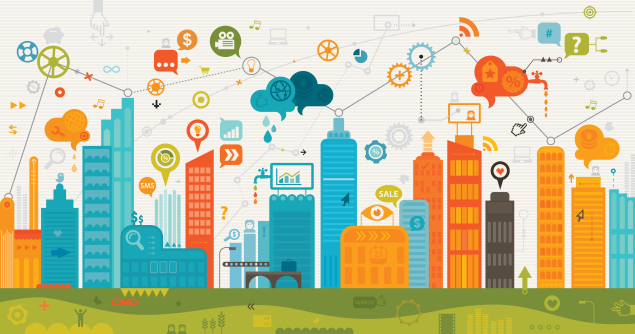If you follow technology news closely, it’s impossible to not hear the drumbeats around wearable technology and IOT (Internet of Things). While the hype is fully justifiable, many have also wondered if this marks the beginning of the end for mobile phones and apps and if we have already starting to see that decline.

The truth cannot be farther from this assumption.Smartphones and mobile apps will be at the center of the IOT and wearable ecosystems, for they will act as the de-facto user interfaces as well as in many cases remote controls for almost anything in these two ecosystems.The mobile apps themselves will continue to evolve and get better as they incorporate emerging technologies such as iBeacons for high-precision location sensing. We will also start to see a clear shift away from B2C and greater emphasis on B2E with regards to new mobile application research and development investments. None is a greater proof of this than the recent partnership between Apple and IBM, which gives Apple the ‘Enterprise’ cache and to IBM the design and usability improvements that it’s products have often lacked in the past. So what are the facts that support the above assertions? I want to share a couple of statistics that I came across recently – one at a very macro level looking out over next decade or so and other at a very micro level based data for last four months or so. The first set of statistics are highlighted in the current issue of Economist:
- It is expected that by 2020 just over 4 billion people in the world will have some kind of smartphone – almost double the 2 billion number today, making them even more ubiquitous than today. The 4 billion number makes it an astonishing 80% of all adults in 2020
- With technological breakthroughs that seem just around the corner, the smartphones of tomorrow are going to have massive amounts of storage on the device, processing capacity that will compete with some of the high-end supercomputers of yesteryears and battery life that is likely to more than triple
- Between iTunes and Google Play, there are now close to 3 million apps available for download and Apple alone sold apps worth $14 billion in 2014 – and these numbers are projected to almost double over next few years
I think it’s fair to say that over next decade or so not only will smartphones make PC’s obsolete but also they will become (if they haven’t already for some) as important to our existence as say food, sleep and clean air.The other set of more micro level statistics came from a Boston based company called Fiksu which monitors mobile app downloads and usage.
- The company’s App Store Competitive index (which examines downloads of the top 200 free iOS apps) recorded 10.3 million app downloads a day in January 2015 – that easily overtook the record of 9.2 million apps a day set just a month earlier
- A year over year comparison the download numbers for January also showed a massive 61% increase from January 2014
It seems clear here that there was definitely a correlation in increase of the download numbers with the release of new iPhones by Apple – thus proving that better improved smartphones will lead to even more app usage by users. Do you agree with the assertion that we are far from a ‘mobility’ fatigue as some have predicted? Or do you feel that we have already reached the peak of mobility adoption and are already starting to see a decline? I would love to hear your thoughts.
Make sure you include these critical ingredients in your mobile strategy. Download the infographic to know more.

Image:jessgroopman.wordpress.com
This article was syndicated from Business 2 Community: Mobility Fatigue – Truth or Fiction?
More Technology & Innovation articles from Business 2 Community:




